Titbits and News from the Mare Nostrum
Eight Ancient Greek Technological Achievements Beyond Philosophy
Eight ancient Greek technological marvels beyond philosophy, from Plato's alarm clock and automatic doors to central heating and lighthouses. Uncover lesser-known facts about Greek ingenuity!
By Nick Nutter on 2025-07-18 | Last Updated 2025-07-19 | Titbits and News from the Mare Nostrum
This article has been visited 1,725 times

The Pharos at Alexandria - AI generated
The Technology of the Ancient Greeks
The article "Eight Ancient Greek Technological Achievements Beyond Philosophy" challenges the common perception of Ancient Greece as solely a hub of philosophical and artistic brilliance. The Greeks were also ingenious engineers who developed remarkable technologies, many of which are often overlooked or attributed to later civilizations.
The article looks at several surprising inventions, including Plato's water-powered alarm clock and Heron of Alexandria's automatic temple doors. It includes the impressive Pharos lighthouse of Alexandria and public clock towers like the Tower of the Winds. These examples demonstrate that ancient Greek ingenuity extended far beyond abstract thought, laying practical foundations for future technological advancements.
Do you enjoy my articles? For your reading pleasure, this website does not carry third party ads. You could help me write more articles by buying me a cup of coffee.
Eight Ancient Greek Technological Achievements Beyond Philosophy
When you think of Ancient Greece, what comes to mind? Perhaps the towering Parthenon, the philosophical musings of Socrates, or the dramatic narratives of Sophocles. We often revere the Greeks for their intellectual prowess and artistic achievements. A closer look reveals a civilization teeming with ingenious engineers and practical innovators. Beyond the realms of abstract thought, the ancient Greeks developed remarkable technologies that shaped their world and laid the foundations for future advancements.
Plato's Alarm Clock: The Philosopher's Practical Gadget
Can you imagine a world without smartphones, where even waking up on time required a bit of creativity? Plato, known for his philosophical musings, such as the Allegory of the Cave, was also a skilled inventor. Legend has it that he designed an alarm clock to make sure his students didn't miss those early morning lectures.
From his descriptions, we can imagine how it worked: water dripping into one vessel, building up air pressure until it finally forced air through a pipe, creating a whistling sound. Like having a rooster in your room, but much more sophisticated!
Automatic Doors: The Divine Power of the Temples
Envisage walking into a temple and seeing the doors open by themselves? Forget sliding doors on futuristic buildings; the ancient Greeks had them too! In the 1st century AD, Heron of Alexandria, a brilliant mathematician and engineer, described automatic doors for temples.
Here’s how they worked. A fire is lit on an altar, and the heat causes air to expand in a hidden chamber, pushing water into a bucket. The weight of the water, connected by ropes and pulleys, then causes the temple doors to swing open. Worshipers must have been astounded, probably believing they witnessed a divine miracle. This wasn't for convenience; it was a theatrical display of divine power.
Central Heating Systems: Warmth from the Hypocaust
While we might associate central heating with Victorian mansions, the Greeks (and later the Romans, who adopted and expanded upon their methods) developed sophisticated heating systems. The hypocaust system, meaning "under-burning," involved creating a space beneath the floor supported by pillars. Hot air from a furnace circulated through this void, radiating warmth upwards through the floor and even into the walls via flues. This ingenious design warmed homes, baths, and public buildings, offering a level of comfort that might surprise those who envision ancient life as perpetually chilly.
Lighthouses: Guiding Lights for Ancient Mariners


Lighthouse of Alexandria - AI generated
Long before GPS, ancient mariners relied on beacons to navigate treacherous coastlines. The Greeks constructed impressive lighthouses, with the most famous being the Pharos of Alexandria. Imagine standing at the base of this towering structure, estimated to be over 100 meters tall, and watching as mirrors reflected sunlight during the day and the light of a fire at night. It is estimated that the Pharos could be seen from between 35 and 50 miles out to sea. The Pharos was one of the Seven Wonders of the Ancient World, a symbol of their advanced society and maritime technology.
Over the last decade, about 100 massive stone blocks, thought to have been part of the Pharos, have been recovered from the harbour at Alexandria.
Clock Towers: Marking Time in the Agora in Athens


The Agora - Athens
We often picture ancient life as governed by the sun, but the Greeks were obsessed with precise timekeeping. While water clocks were common indoors, outdoor timekeeping required different solutions. The Tower of the Winds in Athens, built around 50 BC, is a prime example of an ancient "clock tower." The tower was built to be visible from the agora, the public meeting place. It combined a sundial with a water clock (clepsydra), so that the clepsydra worked when the sun was not visible. A bronze figure of Triton acted as a weathervane on top. This public display of time wasn't just for curiosity; it regulated civic life, market activities, and religious ceremonies.
Weather Stations: Predicting Nature's Moods
The Greeks were keen observers of their environment, and their desire to understand and predict weather patterns led to early forms of "weather stations." While not sophisticated as modern meteorological centres, structures like the Tower of the Winds incorporated features to observe and indicate wind direction, a crucial element for farmers and sailors. Furthermore, philosophers like Aristotle wrote extensively on meteorology, attempting to explain atmospheric phenomena, laying the groundwork for scientific inquiry into weather patterns.
Windmills: Harnessing Nature's Power
The popular image of windmills often conjures up images of Dutch landscapes. However, there is evidence suggesting that the ancient Greeks had a rudimentary understanding of wind power.
Heron of Alexandria described a wind-powered organ in the 1st century AD, indicating an awareness of how to harness wind for mechanical purposes. Heron wrote, "The wind, which is a natural force, can be used to produce sound, demonstrating the power of nature in our daily lives." While not widespread for grinding grain as in later periods, this demonstrates an early conceptual grasp of using natural forces for practical applications. Historian George Sarton once remarked, "The ingenuity of the Greeks knew no bounds; they were not merely dreamers, but practical men as well."
The Aeolipile: More Than a Toy


Reproduction of Heron's Aeolipile
One of Heron's most celebrated, yet often misunderstood, inventions is the aeolipile, a steam-powered rotating sphere. While frequently presented as a mere novelty, the aeolipile was, in fact, the first recorded steam engine, demonstrating the principle of jet propulsion. It wasn't designed to power industrial machinery – that would come nearly two millennia later – but its existence alone shatters the notion that understanding of steam power is a purely modern phenomenon. "Heron’s aeolipile," wrote the historian of technology, Arnold Pacey, "was an ingenious device which might be considered the first turbine engine." This wasn't a forgotten experiment; it was a first step in understanding motive power generated by steam.
Deep Thinkers and Creative Engineers
These examples offer a glimpse into a side of ancient Greek civilization often overshadowed by their philosophical and artistic achievements. They reveal a people who were not only deep thinkers but also creative engineers, whose practical inventions had a substantial impact on their daily lives and laid the groundwork for the technological advancements that followed.
Do you enjoy my articles? For your reading pleasure, this website does not carry third party ads. You could help me write more articles by buying me a cup of coffee.
 Dana Island, oldest ancient shipyard
Dana Island, oldest ancient shipyard A Bronze Age Courier Service
A Bronze Age Courier Service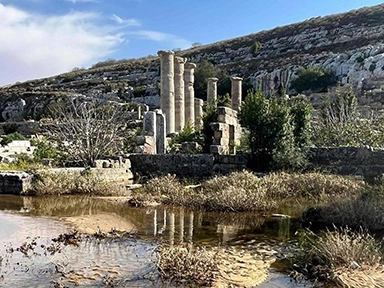 Cyrene's Lost Treasures
Cyrene's Lost Treasures The Invisible Enemy
The Invisible Enemy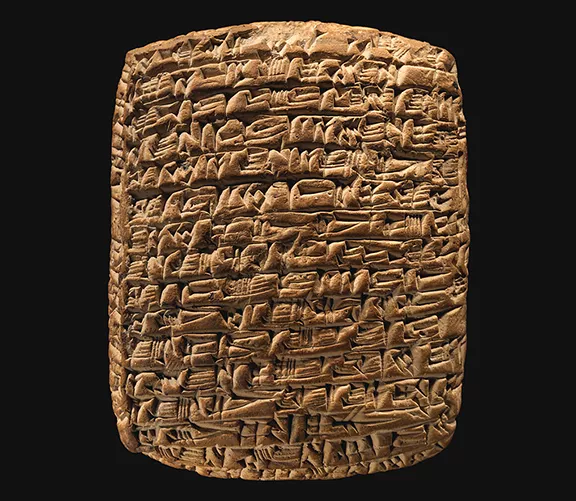 The World's First Company
The World's First Company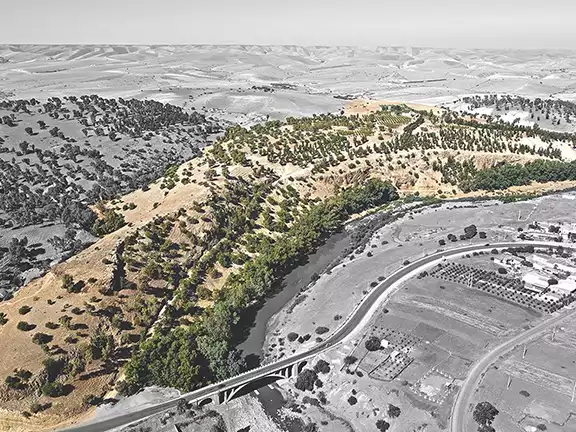 The Copper Age Site of Oued Beht
The Copper Age Site of Oued Beht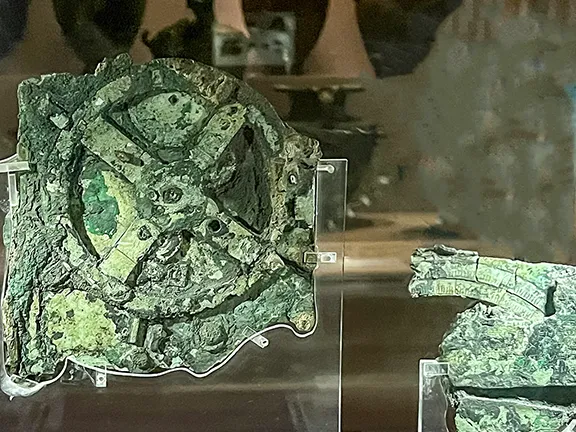 How the Antikythera Mechanism Works
How the Antikythera Mechanism Works Kach Kouch and Iberia
Kach Kouch and Iberia Mediterranean Diet Evolution
Mediterranean Diet Evolution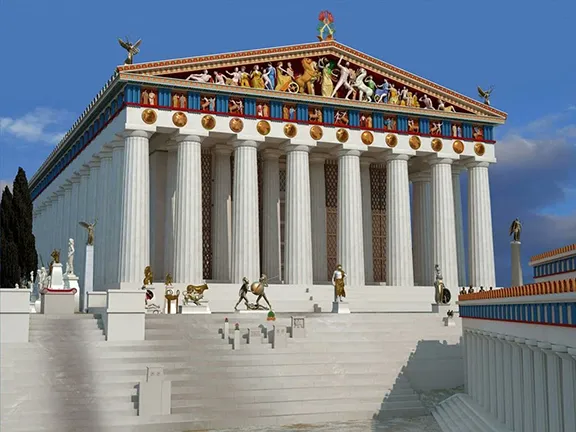 Hidden Colours of Ancient Statues
Hidden Colours of Ancient Statues Cleopatra: Egypt's Last Pharaoh
Cleopatra: Egypt's Last Pharaoh Alexandria Library's True Fate
Alexandria Library's True Fate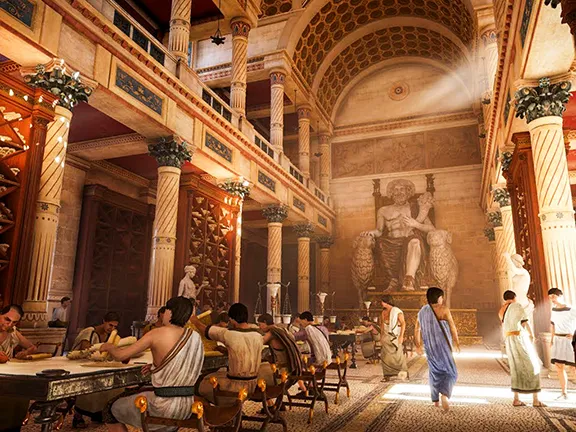 Six Great Ancient Libraries
Six Great Ancient Libraries Broadening Horizons
Broadening Horizons The Nadītu Investors of Sippar
The Nadītu Investors of Sippar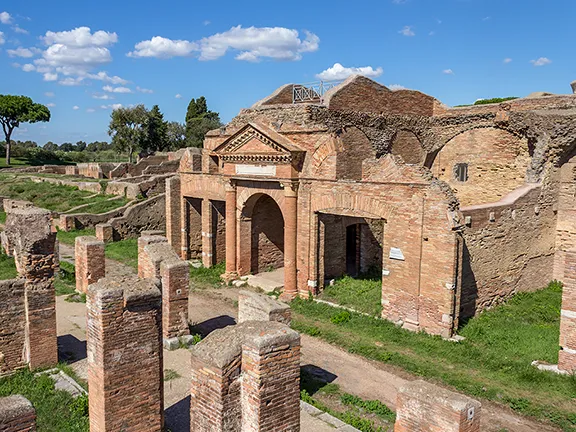 New light on Hadrian
New light on Hadrian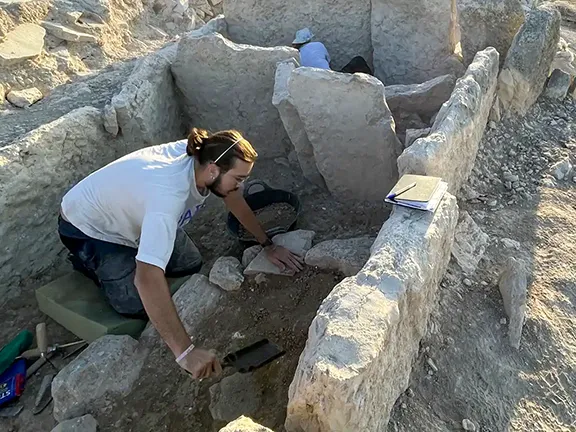 The Dolmens of La Lentejuela Teba
The Dolmens of La Lentejuela Teba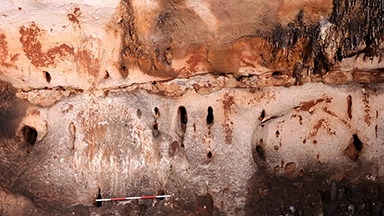 New Cave Art Discovery in Valencia region
New Cave Art Discovery in Valencia region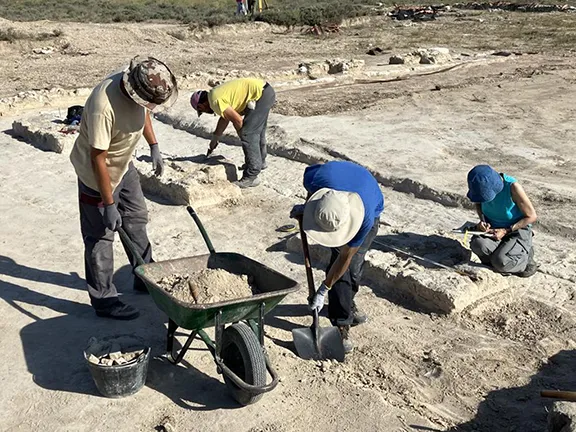 La Cabaneta Oldest Roman Forum in Iberian Peninsula
La Cabaneta Oldest Roman Forum in Iberian Peninsula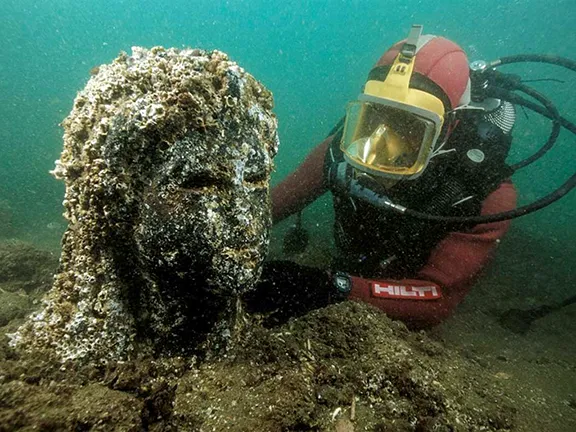 New Discoveries at Ancient Sunken City of Thonis-Heracleion
New Discoveries at Ancient Sunken City of Thonis-Heracleion Europe's Oldest Shoes Found: 6,000-Year-Old Sandals Woven from Grass
Europe's Oldest Shoes Found: 6,000-Year-Old Sandals Woven from Grass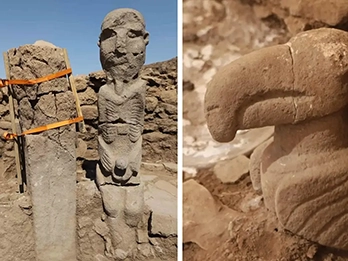 Discoveries at Gobekli Tepe and Karahan
Discoveries at Gobekli Tepe and Karahan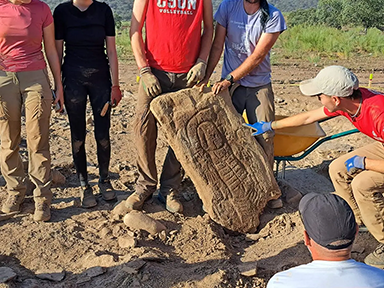 Decorated Stelae found in Canaveral de Leon, Spain
Decorated Stelae found in Canaveral de Leon, Spain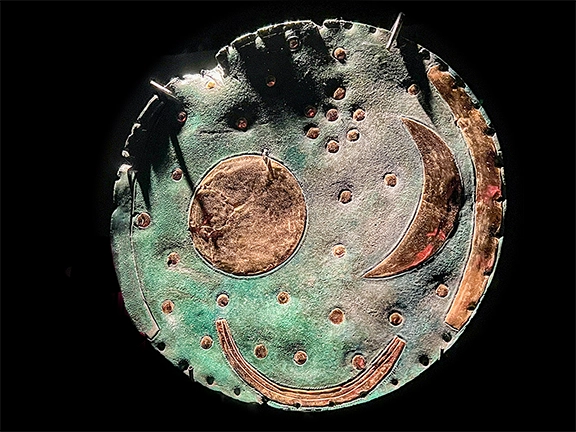 The Nebra Sky Disc: A Bronze Age Calendar
The Nebra Sky Disc: A Bronze Age Calendar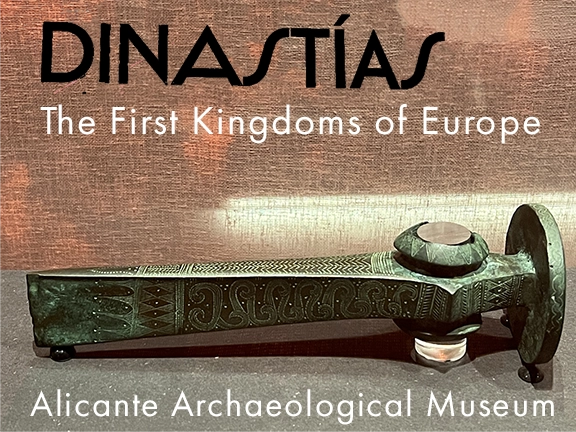 New Exhibition at the Archaeological Museum in Alicante
New Exhibition at the Archaeological Museum in Alicante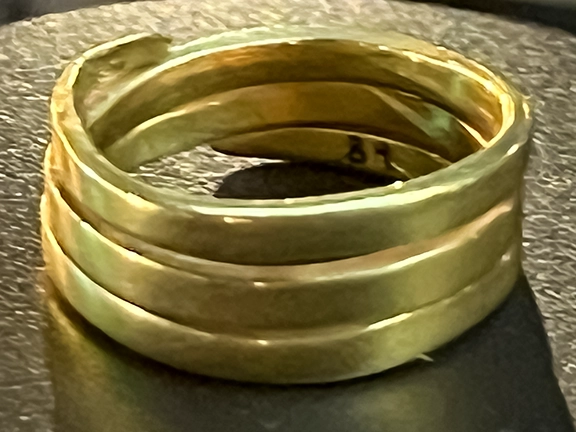 Bronze Age: A Golden Age for Jewellery
Bronze Age: A Golden Age for Jewellery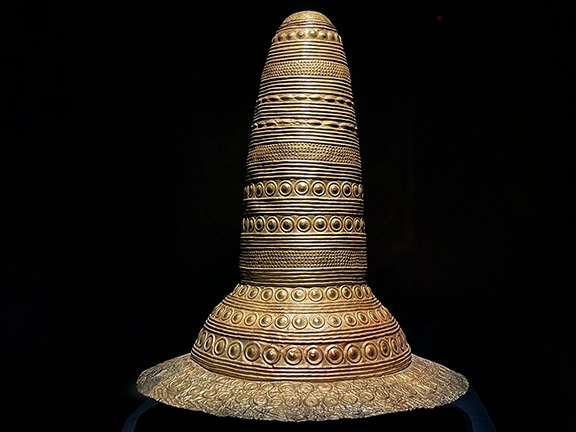 The Golden Hat of Schifferstadt
The Golden Hat of Schifferstadt